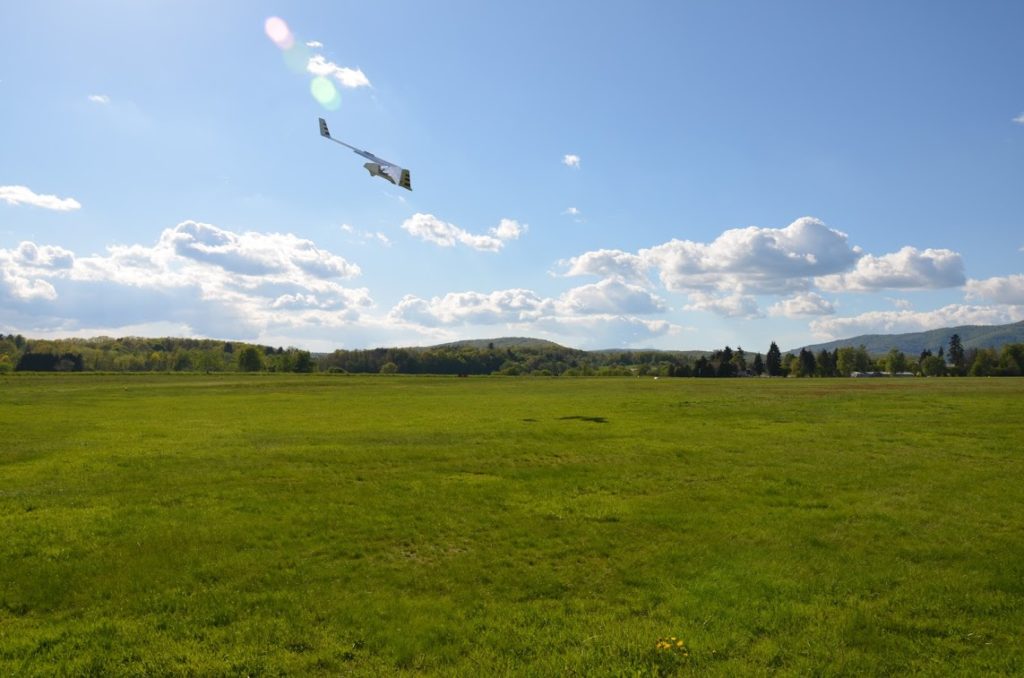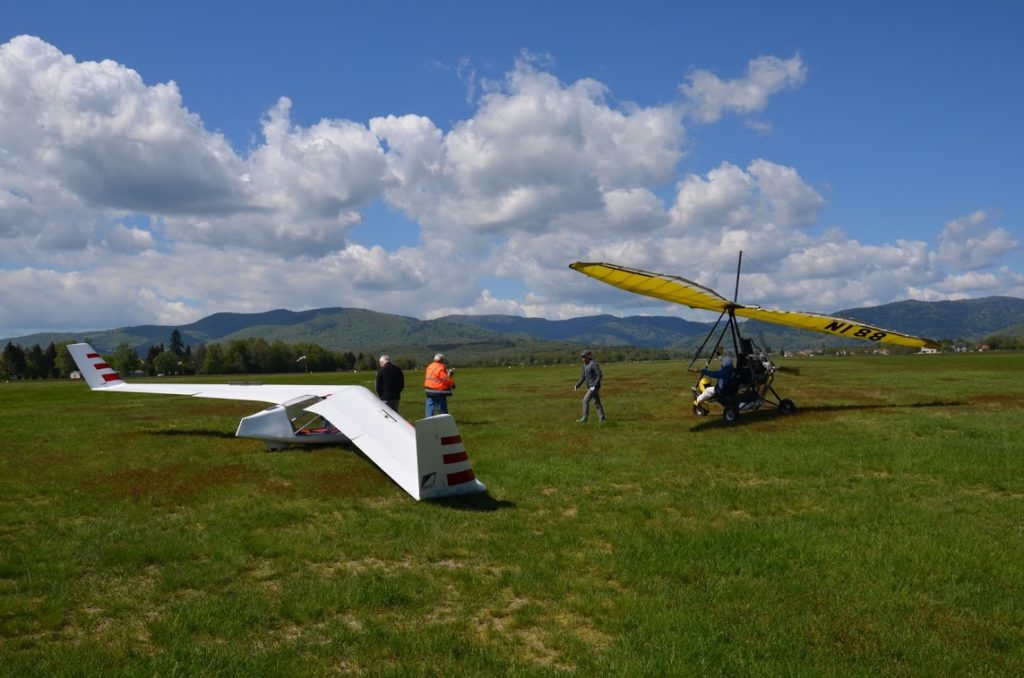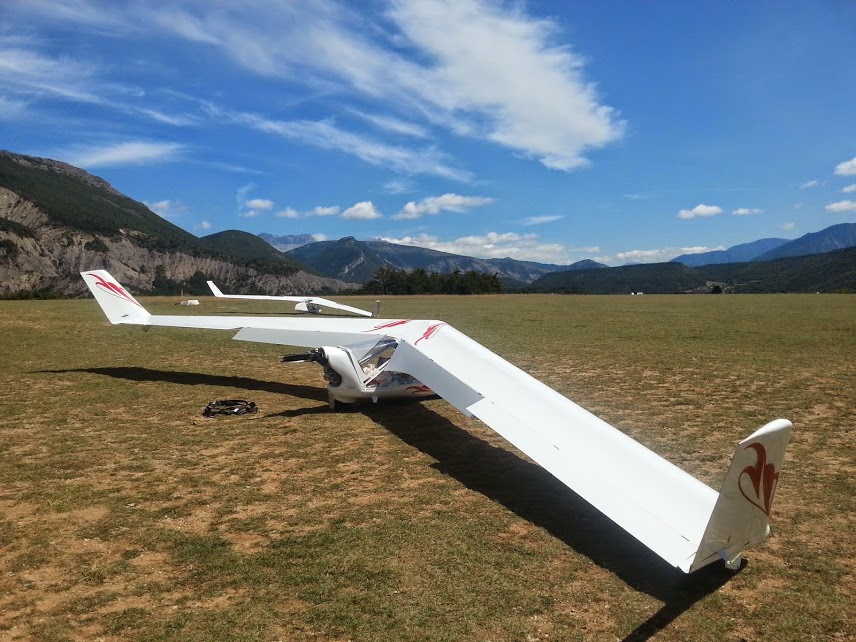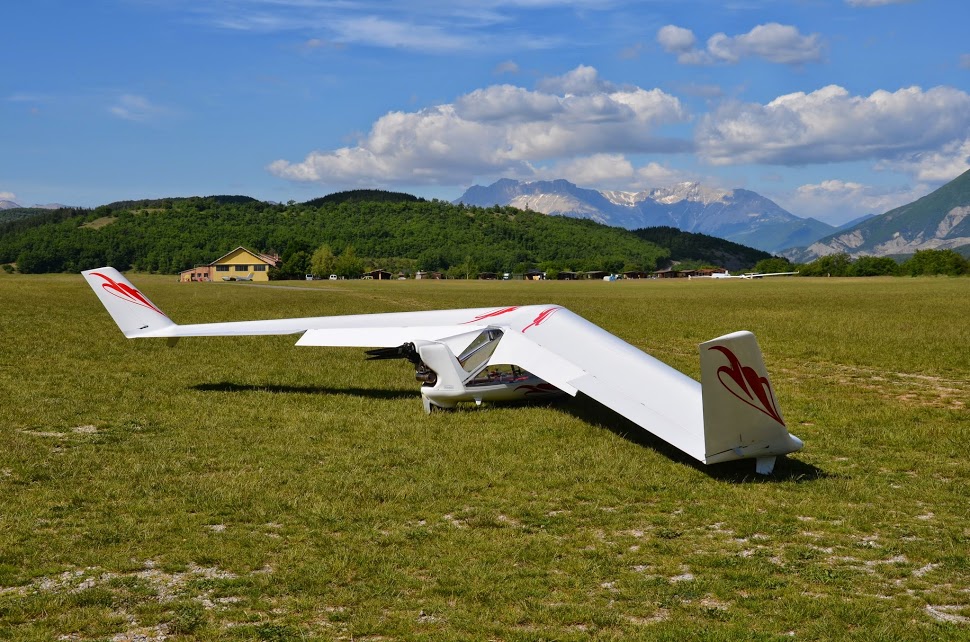- By Pascal Lanser
- On 03/07/2017
Aériane: Engineering and talent
Gembloux-Sauvenière, 29th April 2011. Bernard Bleeckx and Vincent Piret, founders and directors of Aériane explain how their Belgian aeronautical company has evolved and developed over the years since it was launched in 1989.

Making your passion your trade
Bernard Bleeckx and Vincent Piret are two Belgians passionate about free flying, with excellent skills at their disposal. One is a technical engineer specialising in composite materials, and the second is an engineer qualified at the ECAM in Brussels. Already experienced in flying flex-wing hang gliders, they set out to develop a rigid-wing hang glider with superior flying performance, particularly in terms of endurance.
In 1989 they opened their workshop at Mont-Saint-Guibert when they took on the construction of the Sirocco, a single seater ULM, holder of several records in France and lauded in the USA. The Sirocco had been developed by Aviasud, a company based in central France, founded and managed by two Belgians, Bernard d’Otreppe and François Goethals. They passed on to Aériane the construction rights of their first design so that they could concentrate their own efforts on their second creation, the Mistral, a two seater ULM, which enjoyed some considerable success in the 1990s.
Ultimately, Aériane built around 30 Siroccos, adding to the 200 or so built by Aviasud since 1983. Having then set a new strategic direction, Aériane sold on the construction rights and the tooling to Dutch company, ACLA in April 2007, which continued the development and sale of the Sirocco.
Bernard Bleeckx (left) and Vincent Piret tackle the assembly of a Swift Light, to deliver within a week. Note the structure of steel tubes and the cockpit shell made from composite materials, with its rear wheels as well as the spar which will encase the two halves of the wing. (Photo Paul Van Caesbroeck)
It was while on a trip to America in March 1993, that Bernard Bleeckx and Vincent Piret discovered the rigid wing SWIFT (Swept Wing with Inboard Flap for Trim). This was a truly original design for free flyers, created and developed by three hang gliding enthusiasts. In January 1986 they opened the Bright Star Hang Glider factory to develop the wing in conjunction with technical support from Stanford University.
The prototype SWIFT took to the air in December 1989, foot-launched from a hill in Marin County, California. The second prototype, in the hands of Eric Beckman, soon outclassed all hang gliders, flying 230km in a competition in California. He could have flown further, but had to land due to a problem with his oxygen supply at 3500m.
Bleeckx and Piret tried the SWIFT on the US west coast and were instant converts and decided to negotiate European manufacturing rights. This new project required a new factory, which Aériane set up in June 1994 in Sauvenière, an industrial area located just north of Gembloux.
From European to global markets
Having obtained the licence to manufacture in Europe in 1993, Aériane soon acquired world rights for the production and development of the SWIFT, when Bright Star decided to cease production after building about 50 of these innovative wings. Aériane’s founders did not hesitate and successfully dedicated themselves to the development of their facility. Their full order book meant they had to maximise manufacturing capacity to produce 40 machines a year for the next few years.

This encouraging start to their business was enhanced further thanks to distance and endurance records made by SWIFT pilots at the FAI World Championships in 1995. Further records followed in subsequent FAI World Championships. More recently, during the summer of 2006, Austrian pilot, Manfred Ruhmer, broke the distance record with a flight of 777km in Zapata, Texas.
The incomparable free-flight potential of the SWIFT was simply dazzling. Vincent Piret and Bernard Bleeckx constantly improved the mechanical and aerodynamic design, adopting modern techniques and materials. The cockpit became lighter yet more robust even with its welded steel tubes. The wings, too, improved. Flight performance was refined with the ability to induce yaw and incline the winglets to 22o, and by adding a directional rudder, operating like air brakes. From two axes originally, the SWIFT is now a true 3 axis machine. The SWIFT Light single seater weighs only 48kg, unloaded (maximum load 150kg). It has a glide ratio of 27 at 75km/h, meaning that at 1000m altitude, gliding at 75km/h, it can cover a distance over the ground of 27km.
This is a formidable performance for an unmotorised aircraft, particularly when compared to flex-wing and rigid-wing hang gliders. Plus they are more comfortable to fly and have a panoramic view from the cockpit, thanks to the perspex cover and a streamlined profile.
The latest aerodynamic improvements to the SWIFT are the spoilers which are carefully positioned in the centre of the leading edge of each wing, and can be applied for a controlled rapid descent, for landing on a particularly short runway, for example.
The SWIFT can be launched by aerotow, just like standard gliders, but it can also be foot-launched. The cockpit has been specifically designed to this effect. The pilot’s harness is like a hammock in which he can sit astride, dropping his legs and feet through the lower shell of the cockpit. To launch, the pilot starts from a hillside, facing into wind, and will be airborne within two or three strides. Once aloft, the pilot brings his legs back inside, placing his feet on the rudder, closing the lower shell of the cockpit, and adjusting his seating position for maximum comfort so that he can fly for as long as possible. Landing is via the rear wheel and foot brake in the nose of the cockpit. More experienced pilots can attempt to foot-land the machine, which, as one can imagine, is much more physical!
The directors of Aériane have not only considerably improved the SWIFT Light, but have also developed a two seater (side by side) version, to meet demand by instructors for training use. Some four or five two seaters were made in the 1990s and two are still in use at Sky Eagles where they continue be flown at Beauvechain. They are not foot-launchable, but designed to be aerotowed behind a ULM or winch-launched. While the features of the SWIFT two-seater remain impressive, Bernard Bleeckx compares its performance to a Citroen 2 CV while the single seater is more equivalent to a Formula 1 racing car!
To top it all, the major SWIFT development that Aériane wanted to achieve was a motorised version, called SWIFT PAS. It was initially conceived as a single two-stroke motor up to 17CV, enough to allow a single seater to self-launch, but not as a propulsion engine. After 2007, the design was replaced by another engine with a better power to weight ratio and better fuel economy : the Bailey 175 four-stroke at 18CV with an electric starter. This British firm was already well known for its paramotor engines. The highly aerodynamic design of the SWIFT enabled a streamlined assembly of the motor in the far end of the fuselage. The three-blade Arplast propeller folds away neatly behind the fairing creating a minimum of drag when the pilot decides to cut the motor and commit to free-flying. For maximum convenience on take-off and landing, the SWIFT PAS is fitted with two wheels in tandem under the fairing, with the front wheel being directional, plus there are small rollers at the tips of the wings.

The unloaded weight of the SWIFT PAS is just over 95 kg, including engine, oil and fuel and emergency parachute, (compared to 48 kg for the non-motorised version) giving a total take-off weight of 191kg. The engine provides a significant advantage in terms of being able to self-launch, and in case of avoiding awkward outlandings, if thermals are illusive. However, it is not designed for continuous use, even though its 8 litres of fuel, theoretically give it about 5hours of motorised flight.
Aériane has, uncontestably, mastered the technique of building ultra-light yet robust gliders, as its ‘torture tests’ have proven. The SWIFT Light has survived loads of 8.7G down to -6G, while the SWIFT PAS with its engine has even reached 11G. These results are beyond even those in equivalent commercial and sports aircraft.
Technology transfer
Their skills in engineering and the application of composite materials has quite logically, led Aériane’s founders to transfer their knowledge to other fields. An early achievement was the design and manufacture of 400 electric vehicles at the Expo Seville in 1992. The company further confirmed its futuristic foresight with the construction of a special sledge for a polar expedition led by Alain Hubert and Dixie Dansercour. Alain Hubert later requested Aériane’s cooperation again for its famous integrated, ecological polar station : Princess Elizabeth. It was well promoted and was installed in the Antarctic in February 2009. This is an achievement of which Belgium can be justifiably proud.
A fine view of a SWIFT PAS in flight, showing the neat integration of the engine and silencer at the rear of the fuselage. Note also the sharp arrow shape (20°) of the wings and the winglets inclined at 22°. These improve the lift and glide of the wing, without increasing the wingspan. (Aériane)
The medical field is another area of development for Aériane. In collaboration with engineers from IBEA, Liege University and the Catholic University of Louvain, the company has designed and constructed mechanical equipment used in medical applications including radiation treatment. Other work, based on fundamental physics, has been undertaken in collaboration with CERN in Switzerland. And in total contrast, the company has been involved in building fairground carousels for EuroDisney at Marne-la-Vallée.
Aériane’s business plan outlines the significance of these diversifications of interest for the company. Since the early 2000s, production of SWIFT gliders has exceeded 100, yet at the same time that the SWIFT share of company business has dropped from 50% to 10%. However, aviation remains an important and essential part of the company.
Looking forward…
Aviation the founding activity of Aériane, is still and will always be very much at the heart of the company. In 2009-2010, Aériane tested the Eck electric motor, produced in Switzerland by Flytec. It is particularly well suited to the SWIFT Light. In fact, this electric motor improves aerodynamics and provides for a better balanced airframe. The prototype was first shown in 2011 at the AERO Salon in Friedrichshafen, which is a sort of Mecca for aviation and sports planes worldwide. One of the prevailing themes of the Salon recently has been environmentally friendly aviation and the use of alternative energy, an area in which Germany is particularly strong.
Based on performance criteria, price, production models (ie not prototypes or one-off demonstrators), ease of piloting and de-rigging, as well as, of course, its ecological footprint, a class of various light weight and ultra-light weight aircraft on show at the Salon was established. There were three, equally placed winners: Aériane’s SWIFT with electric motor; the Antarès motorised glider with its 22m wingspan and a 50kW motor; and the Sun Seeker from François Raynaud, an ultra-light glider sporting photovoltaic panels.
This place on the podium goes some way to recognising worldwide Aériane’s technical prowess. Meanwhile, the company already launched the construction of an advanced series of six SWIFT aircraft with an electric motor, and which were already sold. The first was delivered at the end of April, and the second at the beginning of May 2011.
In parallel, Aériane in conjunction with a Californian company, has been developing a drone destined for scientific missions.

In a little less than 20 years, Aériane has evolved from building 30 Sirocco ULMs, then rapidly establishing its name in the construction of the technologically innovative SWIFT, building 135 machines, including 5 two-seaters and 7 with the new electric motor, and the rest split between the original SWIFT Light and the SWIFT PAS. These skills in the structural design using composite materials for lightness and strength, have been successfully applied to other domains, both in the transport and medical fields. This ‘big’ small-to-medium enterprise (SME), now has 14 full-time employees and provides work for a large number of additional skilled workers and subcontractors. The order book is 100% full for 2011 and already at 50% for 2012. Aériane is unaware of any economic crisis, and its only fault, if it can be called a fault, is to be too modest, as it has not sufficiently expounded its undeniable multi-talented, engineering skills and knowledge more widely.
Jean-Pierre Decock
